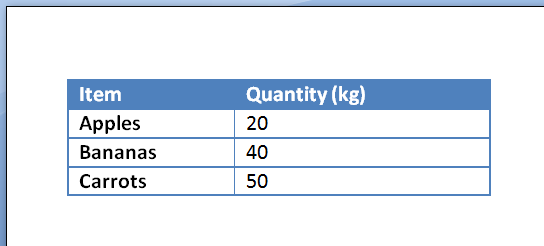Analyzing your prompt, please hold on...
An error occurred while retrieving the results. Please refresh the page and try again.
Aspose.Words is a class library designed for server-side processing of documents in various formats – PDF, HTML, different Microsoft Word formats and others – and supports tables in the following ways:
In this article, we will learn more about table structure, cells, rows, and columns supported by Aspose.Words, and the details of working with such tables.
As already mentioned, the table consists of such elements as Cell, Row and Column. These are concepts that are common to all tables in general, regardless of the document format.
This is a common example of a table found in a Microsoft Word document:

A table from any document loaded into Aspose.Words is imported as a Table node. The table can be found as a child of:
The table node does not contain any real content – instead, it is a container for other such nodes that make up the content:

The picture above shows that the document contains a table of several rows, which in turn consists of two cells. Each of the two cells includes a paragraph, which is the container for the cell’s formatted text.
It is also worth noting that separating two consecutive tables in a document requires at least one empty paragraph after the table. Without such a paragraph, consecutive tables would be joined together into one. This behavior is identical in both Microsoft Word and Aspose.Words.
Aspose.Words has a number of classes related to tables – Tables, Rows, Cells, and others.
Analyzing your prompt, please hold on...
An error occurred while retrieving the results. Please refresh the page and try again.